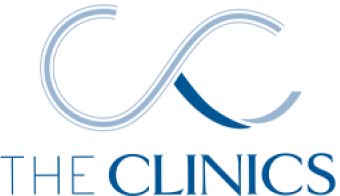
Neck Lift
A neck lift, also known as a lower rhytidectomy, is a surgical procedure specifically tailored to refresh and revitalize the appearance of the neck and lower face.

What is a Neck Lift?
A neck lift, also known as a lower rhytidectomy, is a surgical procedure specifically tailored to refresh and revitalize the appearance of the neck and lower face. It targets concerns such as sagging skin, loss of muscle tone and excess fat around the neck and jawline.
FAQ’s
What’s involved with a Neck Lift?
A neck lift may involve any combination of the following procedures:
Neck liposuction (to remove excess fat deposits), Platysmaplasty (to tighten the neck muscles and improve platysmal bands), Cervicoplasty (to remove excess skin from the neck) and non-surgical skin tightening (such as Ultherapy to stimulate collagen production and firm loose skin).
Can a neck lift be combined with other procedures?
Yes, in fact it’s common to combine a neck lift with other surgeries such as a facelift, brow lift, eyelid surgery (blepharoplasty), rhinoplasty, laser resurfacing and fat transfer.
What are the complications of a neck lift?
Like with any surgery, a neck lift may result in complications such as infection, bleeding, scarring, nerve damage and reaction to the anesthesia. It’s also possible to be dissatisfied with the results. For this reason it’s very important to choose a qualified and experienced surgeon.
We invite you to book a consultation with one of our expert plastic surgeons to find out if a neck lift is right for you.
Neck Lift Quick Facts:
| Cost of Neck Lift | TBD |
|---|---|
| Duration of Surgery | 1-4 hours |
| Hospital Stay Required? | Yes |
| Stitches Removed | 5-7 days |
| Days of Social Downtime | 2-3 weeks |

After Surgery:
Downtime and recovery: Each person experiences the recovery period differently. Your unique healing journey will be based on what type of procedure you had and how well your body heals. Below are some general guidelines for what you can expect:
1 Day Post-Op: Swelling, bruising and pain are expected after a neck lift and are most acute in the 48 hours. Your surgeon will provide pain medication to keep you comfortable. It’s important to keep your head elevated during waking hours, also while sleeping, to minimize swelling.
1 Week Post-Op: You’ll wake up from surgery with dressing and possibly a compression garment. Maintain a soft diet to prevent hard chewing and straining your neck muscles. Your surgeon may use both dissolvable and non-dissolvable sutures. If non-dissolvable sutures are used, they will be removed within a week, along with any drains or staples.
Make sure to get plenty of rest during the first week. Avoid strenuous physical activity, bending over, lifting heavy objects or anything that can cause a spike in blood pressure. Follow your surgeon’s homecare instructions carefully to ensure your recovery is going smoothly.
2-4 Weeks Post-Op:
Swelling and bruising will continue to subside. Most patients can return to light daily activities after the first week; however, strenuous activities and heavy lifting should still be avoided. Continue wearing your compression garments. You will have some incisions under the chin and possibly in other areas of the face. You can start using scar management products, such as creams or silicone sheets, to promote healing.
Long-term recovery:
You will notice your lower face starting to look more contoured and swelling minimal. Keep in mind that it’s common to experience some loss of sensation, particularly at the incision sites. This normally improves over time. Be patient as it may take several months to see the full results of a neck lift.
How to Prepare for a Neck Lift
Do your research: A consultation and medical evaluation with a qualified Plastic Surgeon is the first step in preparing for your neck lift. During your initial meeting you can discuss your unique facial anatomy, aesthetic goals, which technique is recommended for you and whether you could benefit from other complementary procedures.
Quit smoking: If you’re a smoker it’s best to quit smoking at least six weeks in advance. Nicotine and other chemicals in tobacco can constrict blood vessels and impair your body’s ability to heal adequately post surgery.
What to Expect Before Surgery:
Follow pre-operative instructions: You will be provided with detailed pre-operative instructions by your surgeon. These may include avoiding medications that promote bleeding, making sure you have all the medications you’ll need post-operatively and when to stop eating and drinking the night before.
Arrange for help: You will need someone to pick you up from the clinic or hospital and take you home. Having someone nearby to help you with basic tasks and medications for the first few days to a week following surgery is recommended.
Plan for your recovery: You should designate a quiet, comfortable place for recovery after your neck lift, especially for the first few days and weeks. Expected recovery is normally 1-2 weeks; however, social downtime can be longer. Make sure to take adequate time off work or social engagements as necessary.
Why Have a Neck Lift?
A person may choose to undergo a neck lift to surgically improve the appearance of the neck and gain jawline definition for the following reasons:

Aging process
Over time the skin on the neck can lose elasticity and firmness, resulting in what is commonly referred to as “turkey wattle.” A neck lift can help achieve smoother skin and neck contouring for a more youthful profile.

Double chin
Loose skin and excess fat in the lower face can give the appearance of a double chin. A neck lift combined with submental fat removal can create a more defined jawline.

Genetic anatomy
Some people naturally lack lower facial contours and jawline definition, or are predisposed to having a heavier neck. A neck lift can improve the neck's appearance and overall facial aesthetics.

After weight loss
An individual who has undergone significant weight loss can develop excess neck skin and fat. By repositioning the skin and muscle during a neck lift can help to achieve a more toned and contoured neck appearance.
ELEGIBILITY The Ideal Candidate for a Neck Lift
The ideal candidate for a neck lift is someone with excess skin and adipose tissue in the neck area. This cosmetic condition can be a result of aging, weight loss, or genetics. Here are some other factors to consider:
Good overall health: A person should be in excellent health and a non-smoker. This includes having no serious physical conditions that could affect the outcome or be a contraindication to surgery and general anesthesia.
Adequate skin quality: Individuals with good skin elasticity tend to have better results with a neck lift. A skilled surgeon, however, will combine various procedures to offer patients the most effective outcome possible.
Have realistic expectations: The ideal candidate should have realistic expectations about what can and cannot be achieved with a neck lift can. While a significant improvement is possible, a neck lift alone won’t make someone look much different or halt the natural aging process.
Be committed to recovery: Recovering from a neck lift can take several weeks or months. It can take even longer if other procedures are performed at the same time. Bruising and swelling can take months to fully subside, with final results visible after 6-12 months.




